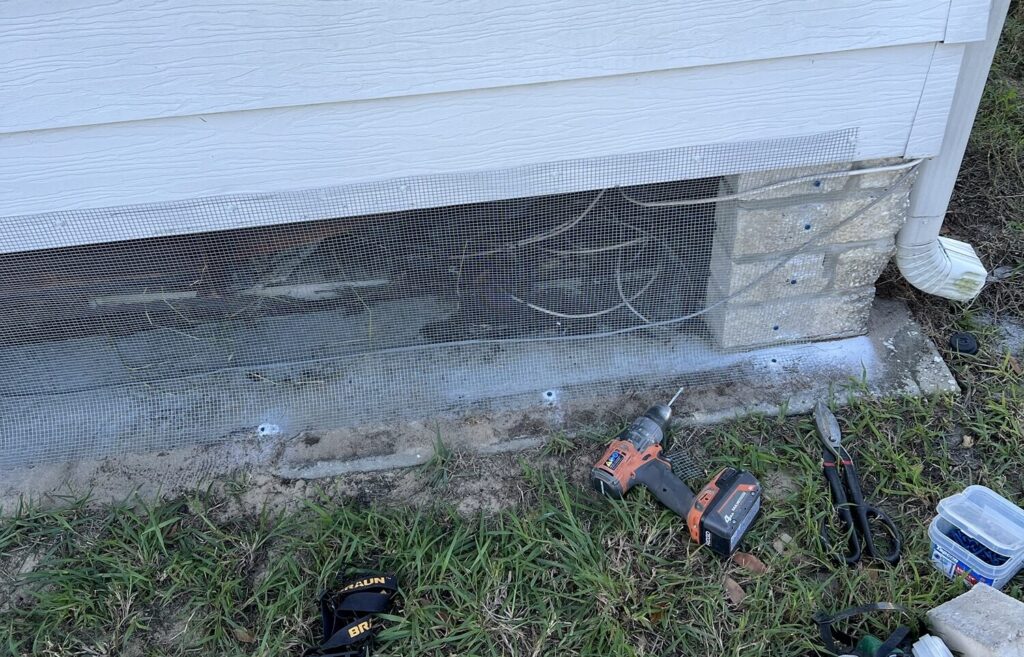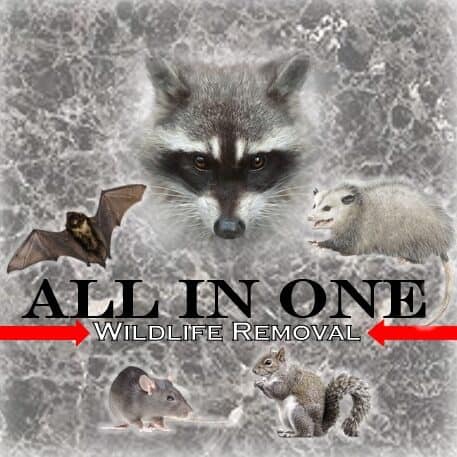Belleair Rodent & Wildlife Removal
Mobile Home Wildlife Exclusion • Dead Animal Removal • Soffit & Attic & Ground Vent Protection
Why Belleair rodent and wildlife removal matters
Belleair, nestled between the Gulf Coast and scenic coastal parks in Pinellas County, contains a mix of older mobile home communities and scattered manufactured residences on slabs, piers, or crawl-space foundations. These homes often feature exposed soffits, attic vents, crawl areas, and ground vents—all vulnerable to wildlife intrusion. With frequent wildlife movement—especially rats, raccoons, squirrels, opossums, bats, snakes, and armadillos—these entry points demand reliable protection. Temporary fixes like bait traps remove current pests but fail to prevent future entry. A permanent solution requires sealing soffits, attic vents, and ground vents with ¼-inch hardware cloth, and installing a continuous hardware cloth barrier around foundations—installed buried, tap‑conned into concrete, or via an interior wrap behind skirting—coupled with dead animal removal from under mobile homes to eliminate odors and health hazards.
Send Us A Message
Wildlife Frequently Intruding Belleair Mobile Homes
- Rats & Mice – enter via ground vents, crawl spaces, and soffits; gnaw insulation
- Raccoons & Opossums – squeeze in through soffit gaps or foundation openings
- Squirrels – access attic via unprotected vents and chew wiring
- Bats & Snakes – exploit small gaps, especially around soffits
- Armadillos – dig under skirting or slab edges, compromising stability
- Hidden Carcasses – decompose under homes, causing odor and pest issues
Belleair homes, being near wooded parks and freshwater intracoastal zones, are especially at risk.
Signs You Might Have Wildlife Under or In Your Home
- Nocturnal scratching or rustling beneath crawl spaces, attics, or ground vents
- Small dirt mounds or tunnel entrances around foundation edges
- Torn soffits, missing vent covers, or insulation shredded by rodents
- Persistent unpleasant odor—likely from decomposing carcasses
- Wildlife sightings or nesting materials near vents or under homes
Our 7‑Step Belleair Wildlife Exclusion & Cleanup Process
- Thorough Inspection
We inspect crawl areas, soffits, ground vents, attic vents, and foundation lines using borescopes and thermal scans. - Humane Wildlife Removal
Live trapping or one-way exits are deployed based on species type, in compliance with local wildlife regulations. - Dead Animal Removal & Sanitization
We locate and remove hidden carcasses under the home, then apply enzyme cleaners and odor neutralizers. - Soffit, Attic & Ground Vent Sealing
We seal or replace damaged soffits and attic vents and affix ¼‑inch hardware cloth to the back of ground vents, preserving airflow while keeping wildlife out. - Hardware Cloth Barrier Installation
Based on foundation:- Buried mesh (8–10″ deep) for soil crawl spaces
- Tap‑conned mesh into concrete for slab foundations
- Interior wrap behind skirting for a hidden finish (premium add-on)
- Skirting & Utility Seal-Up
We reinforce skirting panels and seal around pipes, vents, piers, and ground vents to close all wildlife entry points. - Final Cleanup & Maintenance
Contaminated insulation is replaced, areas sanitized, and quarterly inspections scheduled to maintain the barrier’s integrity.
This comprehensive system, including ground vent protection, ensures long-term exclusion—unlike bait boxes or traps that only address current problems.
Why This Method Works in Belleair
- Guaranteed exclusion – ¼‑inch hardware cloth is resistant to digging, gnawing, and climbing
- Complete airflow protection – ground vent mesh allows ventilation while keeping wildlife out
- All-season defense – sealed soffits and vents prevent seasonal nesting
- Health-first approach – carcass removal stops mold, odors, and pest infestations
- Aesthetically clean – optional interior wrap keeps barriers out of sight
This Belleair mobile home shows a ¼‑inch galvanized hardware cloth barrier—either buried in soil or tap‑conned into concrete, depending on foundation. Additionally, soffits, attic vents, and ground vents are sealed with hardware cloth, preserving airflow while blocking wildlife. For appearance-conscious homeowners, an interior wrap option hides the mesh behind skirting at added cost. Together, this system is the only guaranteed method to prevent wildlife infiltration—far superior to bait traps or boxes.

Take Action—Book Your Free Belleair Inspection
Secure your home with:
- Wildlife and dead animal removal
- Guaranteed hardware cloth barrier (exterior or interior)
- Soffit, attic, and ground vent sealing
- Insulation replacement and sanitization
- Quarterly maintenance for permanent wildlife protection
Wildlife in Belleair
With nearby coastal wetlands, wooded parks, and older mobile home communities, Belleair experiences high wildlife traffic—especially near water and greenbelt adjacency. Elevated and ground-vented homes face constant intrusion without permanent exclusion measures, making prevention critical.
Belleair FAQs
Continuous ¼‑inch hardware cloth barrier (buried, tap‑conned, or interior-wrapped), plus sealed soffits, attic vents, and ground vents—each backed with detailed exclusion techniques.
Not without protection. We always install ¼‑inch hardware cloth behind ground vents to stop rodents and small wildlife while preserving crawl-space airflow.
Yes. Moisture and vegetation attract rodents frequently under mobile homes. Effective exclusion is needed to prevent nesting.
Carcasses emit foul odors, attract pests, and encourage mold—prompt removal is essential for health and safety.
No. They may remove current pests, but don’t block entry. Only a licensed hardware cloth barrier system—plus ground vent sealing—offers full protection.
Complete services—wildlife removal, ground vent mesh, foundation barrier, vent sealing, carcass cleanup—cost $600–1,500, based on foundation type and optional interior wrap.
